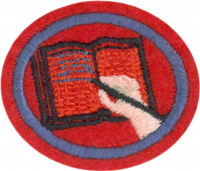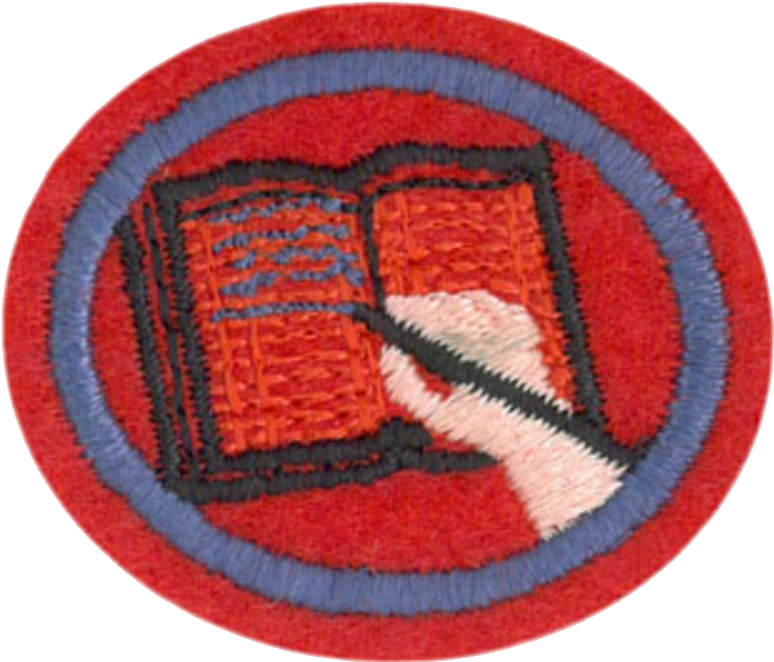Difference between revisions of "AY Honors/Accounting/Requirements"
Jomegat bot (talk | contribs) (Bot: Automated import of articles *** existing text overwritten ***) |
(Marked this version for translation) |
||
| Line 6: | Line 6: | ||
| − | <b>Prologue: <section begin=reqPrologue /><noinclude><translate></noinclude>Complete a high school or college course in accounting OR the following requirements: | + | <b>Prologue: <section begin=reqPrologue /><noinclude><translate><!--T:1--> |
| + | </noinclude>Complete a high school or college course in accounting OR the following requirements: | ||
<noinclude></translate></noinclude><section end=reqPrologue /></b> | <noinclude></translate></noinclude><section end=reqPrologue /></b> | ||
| − | <b>1. <section begin=req1 /><noinclude><translate></noinclude>What is accounting? | + | <b>1. <section begin=req1 /><noinclude><translate><!--T:2--> |
| + | </noinclude>What is accounting? | ||
<noinclude></translate></noinclude><section end=req1 /></b> | <noinclude></translate></noinclude><section end=req1 /></b> | ||
| − | <b>2. <section begin=req2 /><noinclude><translate></noinclude>What are some functions of an accountant? | + | <b>2. <section begin=req2 /><noinclude><translate><!--T:3--> |
| + | </noinclude>What are some functions of an accountant? | ||
<noinclude></translate></noinclude><section end=req2 /></b> | <noinclude></translate></noinclude><section end=req2 /></b> | ||
| − | <b>3. <section begin=req3 /><noinclude><translate></noinclude>Define the following accounting terms: | + | <b>3. <section begin=req3 /><noinclude><translate><!--T:4--> |
| + | </noinclude>Define the following accounting terms: | ||
<noinclude></translate></noinclude><section end=req3 /></b> | <noinclude></translate></noinclude><section end=req3 /></b> | ||
| − | :<b>a. <section begin=req3a /><noinclude><translate></noinclude>Equity | + | :<b>a. <section begin=req3a /><noinclude><translate><!--T:5--> |
| + | </noinclude>Equity | ||
<noinclude></translate></noinclude><section end=req3a /></b> | <noinclude></translate></noinclude><section end=req3a /></b> | ||
| − | :<b>b. <section begin=req3b /><noinclude><translate></noinclude>Depreciation | + | :<b>b. <section begin=req3b /><noinclude><translate><!--T:6--> |
| + | </noinclude>Depreciation | ||
<noinclude></translate></noinclude><section end=req3b /></b> | <noinclude></translate></noinclude><section end=req3b /></b> | ||
| − | :<b>c. <section begin=req3c /><noinclude><translate></noinclude>Balance sheet | + | :<b>c. <section begin=req3c /><noinclude><translate><!--T:7--> |
| + | </noinclude>Balance sheet | ||
<noinclude></translate></noinclude><section end=req3c /></b> | <noinclude></translate></noinclude><section end=req3c /></b> | ||
| − | :<b>d. <section begin=req3d /><noinclude><translate></noinclude>Cash flow | + | :<b>d. <section begin=req3d /><noinclude><translate><!--T:8--> |
| + | </noinclude>Cash flow | ||
<noinclude></translate></noinclude><section end=req3d /></b> | <noinclude></translate></noinclude><section end=req3d /></b> | ||
| − | :<b>e. <section begin=req3e /><noinclude><translate></noinclude>Capital | + | :<b>e. <section begin=req3e /><noinclude><translate><!--T:9--> |
| + | </noinclude>Capital | ||
<noinclude></translate></noinclude><section end=req3e /></b> | <noinclude></translate></noinclude><section end=req3e /></b> | ||
| − | :<b>f. <section begin=req3f /><noinclude><translate></noinclude>Accounts payable | + | :<b>f. <section begin=req3f /><noinclude><translate><!--T:10--> |
| + | </noinclude>Accounts payable | ||
<noinclude></translate></noinclude><section end=req3f /></b> | <noinclude></translate></noinclude><section end=req3f /></b> | ||
| − | :<b>g. <section begin=req3g /><noinclude><translate></noinclude>Accounts receivable | + | :<b>g. <section begin=req3g /><noinclude><translate><!--T:11--> |
| + | </noinclude>Accounts receivable | ||
<noinclude></translate></noinclude><section end=req3g /></b> | <noinclude></translate></noinclude><section end=req3g /></b> | ||
| − | :<b>h. <section begin=req3h /><noinclude><translate></noinclude>General ledger | + | :<b>h. <section begin=req3h /><noinclude><translate><!--T:12--> |
| + | </noinclude>General ledger | ||
<noinclude></translate></noinclude><section end=req3h /></b> | <noinclude></translate></noinclude><section end=req3h /></b> | ||
| − | :<b>i. <section begin=req3i /><noinclude><translate></noinclude>Net income | + | :<b>i. <section begin=req3i /><noinclude><translate><!--T:13--> |
| + | </noinclude>Net income | ||
<noinclude></translate></noinclude><section end=req3i /></b> | <noinclude></translate></noinclude><section end=req3i /></b> | ||
| − | :<b>j. <section begin=req3j /><noinclude><translate></noinclude>Retirement planning | + | :<b>j. <section begin=req3j /><noinclude><translate><!--T:14--> |
| + | </noinclude>Retirement planning | ||
<noinclude></translate></noinclude><section end=req3j /></b> | <noinclude></translate></noinclude><section end=req3j /></b> | ||
| − | <b>4. <section begin=req4 /><noinclude><translate></noinclude>What are some advantages of computerized accounting? | + | <b>4. <section begin=req4 /><noinclude><translate><!--T:15--> |
| + | </noinclude>What are some advantages of computerized accounting? | ||
<noinclude></translate></noinclude><section end=req4 /></b> | <noinclude></translate></noinclude><section end=req4 /></b> | ||
| − | <b>5. <section begin=req5 /><noinclude><translate></noinclude>What type of education and skills are necessary to be an accountant? | + | <b>5. <section begin=req5 /><noinclude><translate><!--T:16--> |
| + | </noinclude>What type of education and skills are necessary to be an accountant? | ||
<noinclude></translate></noinclude><section end=req5 /></b> | <noinclude></translate></noinclude><section end=req5 /></b> | ||
| − | <b>6. <section begin=req6 /><noinclude><translate></noinclude>What certifications are available for accountants? How do they differ from earning a college degree in accounting? | + | <b>6. <section begin=req6 /><noinclude><translate><!--T:17--> |
| + | </noinclude>What certifications are available for accountants? How do they differ from earning a college degree in accounting? | ||
<noinclude></translate></noinclude><section end=req6 /></b> | <noinclude></translate></noinclude><section end=req6 /></b> | ||
| − | <b>7. <section begin=req7 /><noinclude><translate></noinclude>Identify and define at least ten accounting career disciplines. | + | <b>7. <section begin=req7 /><noinclude><translate><!--T:18--> |
| + | </noinclude>Identify and define at least ten accounting career disciplines. | ||
<noinclude></translate></noinclude><section end=req7 /></b> | <noinclude></translate></noinclude><section end=req7 /></b> | ||
| − | <b>8. <section begin=req8 /><noinclude><translate></noinclude>Individually or as a group, discuss the biblical principles of each of the following texts, drawing comparisons to the field of accounting: | + | <b>8. <section begin=req8 /><noinclude><translate><!--T:19--> |
| + | </noinclude>Individually or as a group, discuss the biblical principles of each of the following texts, drawing comparisons to the field of accounting: | ||
<noinclude></translate></noinclude><section end=req8 /></b> | <noinclude></translate></noinclude><section end=req8 /></b> | ||
| − | :<b>a. <section begin=req8a /><noinclude><translate></noinclude>Internal Controls – 2 Chronicles 24:11 | + | :<b>a. <section begin=req8a /><noinclude><translate><!--T:20--> |
| + | </noinclude>Internal Controls – 2 Chronicles 24:11 | ||
<noinclude></translate></noinclude><section end=req8a /></b> | <noinclude></translate></noinclude><section end=req8a /></b> | ||
| − | :<b>b. <section begin=req8b /><noinclude><translate></noinclude>Accountability – Ecclesiastes 4:1-2 | + | :<b>b. <section begin=req8b /><noinclude><translate><!--T:21--> |
| + | </noinclude>Accountability – Ecclesiastes 4:1-2 | ||
<noinclude></translate></noinclude><section end=req8b /></b> | <noinclude></translate></noinclude><section end=req8b /></b> | ||
| − | :<b>c. <section begin=req8c /><noinclude><translate></noinclude>Balancing – Leviticus 19:35-36, Deuteronomy 25:13-16 | + | :<b>c. <section begin=req8c /><noinclude><translate><!--T:22--> |
| + | </noinclude>Balancing – Leviticus 19:35-36, Deuteronomy 25:13-16 | ||
<noinclude></translate></noinclude><section end=req8c /></b> | <noinclude></translate></noinclude><section end=req8c /></b> | ||
| − | :<b>d. <section begin=req8d /><noinclude><translate></noinclude>Integrity and Values – 2 Corinthians 8:16-20 | + | :<b>d. <section begin=req8d /><noinclude><translate><!--T:23--> |
| + | </noinclude>Integrity and Values – 2 Corinthians 8:16-20 | ||
<noinclude></translate></noinclude><section end=req8d /></b> | <noinclude></translate></noinclude><section end=req8d /></b> | ||
| − | :<b>e. <section begin=req8e /><noinclude><translate></noinclude>Monitoring – 2 Kings 12:16, Luke 16 | + | :<b>e. <section begin=req8e /><noinclude><translate><!--T:24--> |
| + | </noinclude>Monitoring – 2 Kings 12:16, Luke 16 | ||
<noinclude></translate></noinclude><section end=req8e /></b> | <noinclude></translate></noinclude><section end=req8e /></b> | ||
| − | <b>9. <section begin=req9 /><noinclude><translate></noinclude>Briefly describe the difference between an individual who is a “millionaire” versus an individual with a net worth of a million dollars. Include a discussion of liquid and non-liquid assets. | + | <b>9. <section begin=req9 /><noinclude><translate><!--T:25--> |
| + | </noinclude>Briefly describe the difference between an individual who is a “millionaire” versus an individual with a net worth of a million dollars. Include a discussion of liquid and non-liquid assets. | ||
<noinclude></translate></noinclude><section end=req9 /></b> | <noinclude></translate></noinclude><section end=req9 /></b> | ||
| − | <b>10. <section begin=req10 /><noinclude><translate></noinclude>Complete three of the following: | + | <b>10. <section begin=req10 /><noinclude><translate><!--T:26--> |
| + | </noinclude>Complete three of the following: | ||
<noinclude></translate></noinclude><section end=req10 /></b> | <noinclude></translate></noinclude><section end=req10 /></b> | ||
| − | :<b>a. <section begin=req10a /><noinclude><translate></noinclude>Reconcile bank balance to book balance in checking accounts, including deposit in transit, service charge, returned NSF, interest on account, and checks in transit. | + | :<b>a. <section begin=req10a /><noinclude><translate><!--T:27--> |
| + | </noinclude>Reconcile bank balance to book balance in checking accounts, including deposit in transit, service charge, returned NSF, interest on account, and checks in transit. | ||
<noinclude></translate></noinclude><section end=req10a /></b> | <noinclude></translate></noinclude><section end=req10a /></b> | ||
| − | :<b>b. <section begin=req10b /><noinclude><translate></noinclude>Show transactions necessary for acquisition or deposit of assets, and acquisition and disposal of liability. Show transactions necessary to close income and expense accounts at year-end. | + | :<b>b. <section begin=req10b /><noinclude><translate><!--T:28--> |
| + | </noinclude>Show transactions necessary for acquisition or deposit of assets, and acquisition and disposal of liability. Show transactions necessary to close income and expense accounts at year-end. | ||
<noinclude></translate></noinclude><section end=req10b /></b> | <noinclude></translate></noinclude><section end=req10b /></b> | ||
| − | :<b>c. <section begin=req10c /><noinclude><translate></noinclude>Be able to write an income statement from a trial balance. | + | :<b>c. <section begin=req10c /><noinclude><translate><!--T:29--> |
| + | </noinclude>Be able to write an income statement from a trial balance. | ||
<noinclude></translate></noinclude><section end=req10c /></b> | <noinclude></translate></noinclude><section end=req10c /></b> | ||
| − | :<b>d. <section begin=req10d /><noinclude><translate></noinclude>Be able to correctly classify balance sheet items with short-term asset, long-term asset, contra asset, short-term liability, long-term liability, and equity. | + | :<b>d. <section begin=req10d /><noinclude><translate><!--T:30--> |
| + | </noinclude>Be able to correctly classify balance sheet items with short-term asset, long-term asset, contra asset, short-term liability, long-term liability, and equity. | ||
<noinclude></translate></noinclude><section end=req10d /></b> | <noinclude></translate></noinclude><section end=req10d /></b> | ||
<section end=Body /> | <section end=Body /> | ||
<noinclude><translate> | <noinclude><translate> | ||
| + | <!--T:31--> | ||
[[Category:Honor Requirements|{{#titleparts:{{PAGENAME}}|1|2}}]] | [[Category:Honor Requirements|{{#titleparts:{{PAGENAME}}|1|2}}]] | ||
[[Category:Honor Requirements Revision 3|{{#titleparts:{{PAGENAME}}|1|2}}]] | [[Category:Honor Requirements Revision 3|{{#titleparts:{{PAGENAME}}|1|2}}]] | ||
<noinclude></translate></noinclude> | <noinclude></translate></noinclude> | ||
{{CloseHonorPage}} | {{CloseHonorPage}} | ||
Revision as of 22:22, 23 March 2021
Prologue: Complete a high school or college course in accounting OR the following requirements:
1. What is accounting?
2. What are some functions of an accountant?
3. Define the following accounting terms:
- a. Equity
- b. Depreciation
- c. Balance sheet
- d. Cash flow
- e. Capital
- f. Accounts payable
- g. Accounts receivable
- h. General ledger
- i. Net income
- j. Retirement planning
4. What are some advantages of computerized accounting?
5. What type of education and skills are necessary to be an accountant?
6. What certifications are available for accountants? How do they differ from earning a college degree in accounting?
7. Identify and define at least ten accounting career disciplines.
8. Individually or as a group, discuss the biblical principles of each of the following texts, drawing comparisons to the field of accounting:
- a. Internal Controls – 2 Chronicles 24:11
- b. Accountability – Ecclesiastes 4:1-2
- c. Balancing – Leviticus 19:35-36, Deuteronomy 25:13-16
- d. Integrity and Values – 2 Corinthians 8:16-20
- e. Monitoring – 2 Kings 12:16, Luke 16
9. Briefly describe the difference between an individual who is a “millionaire” versus an individual with a net worth of a million dollars. Include a discussion of liquid and non-liquid assets.
10. Complete three of the following:
- a. Reconcile bank balance to book balance in checking accounts, including deposit in transit, service charge, returned NSF, interest on account, and checks in transit.
- b. Show transactions necessary for acquisition or deposit of assets, and acquisition and disposal of liability. Show transactions necessary to close income and expense accounts at year-end.
- c. Be able to write an income statement from a trial balance.
- d. Be able to correctly classify balance sheet items with short-term asset, long-term asset, contra asset, short-term liability, long-term liability, and equity.


